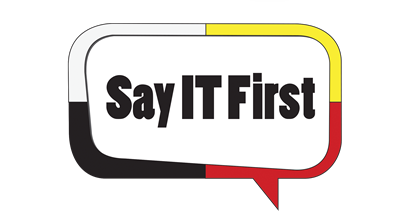Some people claim the only way to transfer the language is through speaking it and engaging in normal conversation. It is an oral tradition after all. In this vein, SayITFirst has created a number of Children’s Shows.
UNESCO also reinforces the claim by highlighting the response of Native Languages to new media such as computers, Internet and television.
SayITFirst hires Corporate Films Canada to produce children’s shows in Maliseet, and Mi'Kmaw (supported by Heritage Canada) and Ojibwe. Along with the shows, we provide approximately ten hours of language games and activities, including: board games, group activities, paper bag cut-outs, mural ideas, cursives, letter recognition and more. By using local Native Elders, actors and children, the shows maintain authenticity and drive community interest.
Read More to learn much more about the background and strategies for these wonderful Children’s shows.
Children’s Shows
I once heard a story about a lady who approached Liberace and told him she would give anything to play piano as well as he did. Liberace turned to her and said, "All you have to do is give me eight hours per day for the next 32 years."
Too many times, observations of a certain consistency overhear Native People claiming "They" should do something about the language. Others have mentioned the Government should be funding Language Revitalization. A Chief recently asked me how he will satisfy the Elders' Committee request for the Chief and Council to bring the language alive again. We have not found funding to maintain what is left of the endangered language let alone providing incremental investments to help its use grow again.
I have the pleasure of working with organisations who collectively have decided to own the solution of language revitalisation and be proactive before it is too late. In business, we say people vote with their wallets. If the problem is big enough, leaders step up and self fund. We are all striving for a simple goal in theory - to immerse children in the Native Language for twenty hours per week for a three year period in order to gain conversational fluency. After all, between the ages of 3 and 5, these young sponges for knowledge add almost 5,000 words to their vocabulary.
All of these facts point to a relatively easy, yet expensive solution. We came to the conclusion that producing children’s shows hosted by puppets is the way to go. We are pursuing a goal to produce one show for every letter of the Native Language alphabet. We also know from early childhood learning literacy that we should start with hard consonants, with vowels to come at the tail end. All shows are entirely in the Native Language. No subtitles exist as studies have shown people will default to the subtitles and never learn the language.
The script is written with tons of input from Elders, daycare workers, communities, and teachers. Once complete, the scripts are translated into the Native Language, then the videography and animation is planned.
All people involved in filming sign a permission/release form to make sure all parents are on board. We also only hire Native actors and aspiring actors from the communities in which we are filming. Each show will feature children from different First Nations.
Each show features a letter, a recipe and cooking skit, healthy living, a book reading, an Elder teaching, a dilemma and a solution. Many anchor words are repeated throughout the show for children and language learners to practice.
Files included with the show contain learning objects produced by a most remarkable retired teacher from New Brunswick. This Mi'Kmaw educator has built a compendium of over 200 of her favourite games used in her 28 years of teaching second languages. Approximately ten hours worth of language activities come with each show. An additional challenge faced is that the content needs to be produced assuming the Native Language teacher or daycare worker is not a native speaker and potentially does not have access to a speaker.
In theory, by producing shows of 22 to 30 minutes in length and gaining funding for approximately 25 shows over the next five years, we will have four hours of video content in conversational Native Language, as well as over 250 hours of language games and activities. We are closing in on the goal of 20 hours per week for three years.

